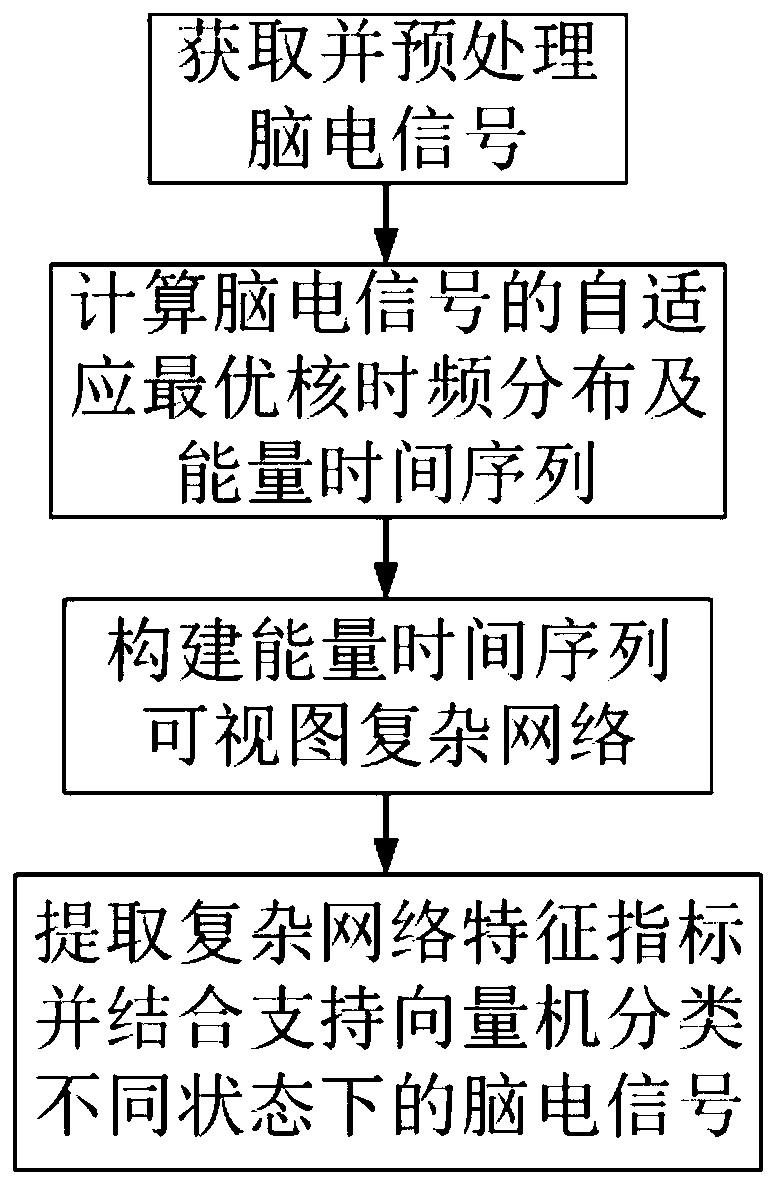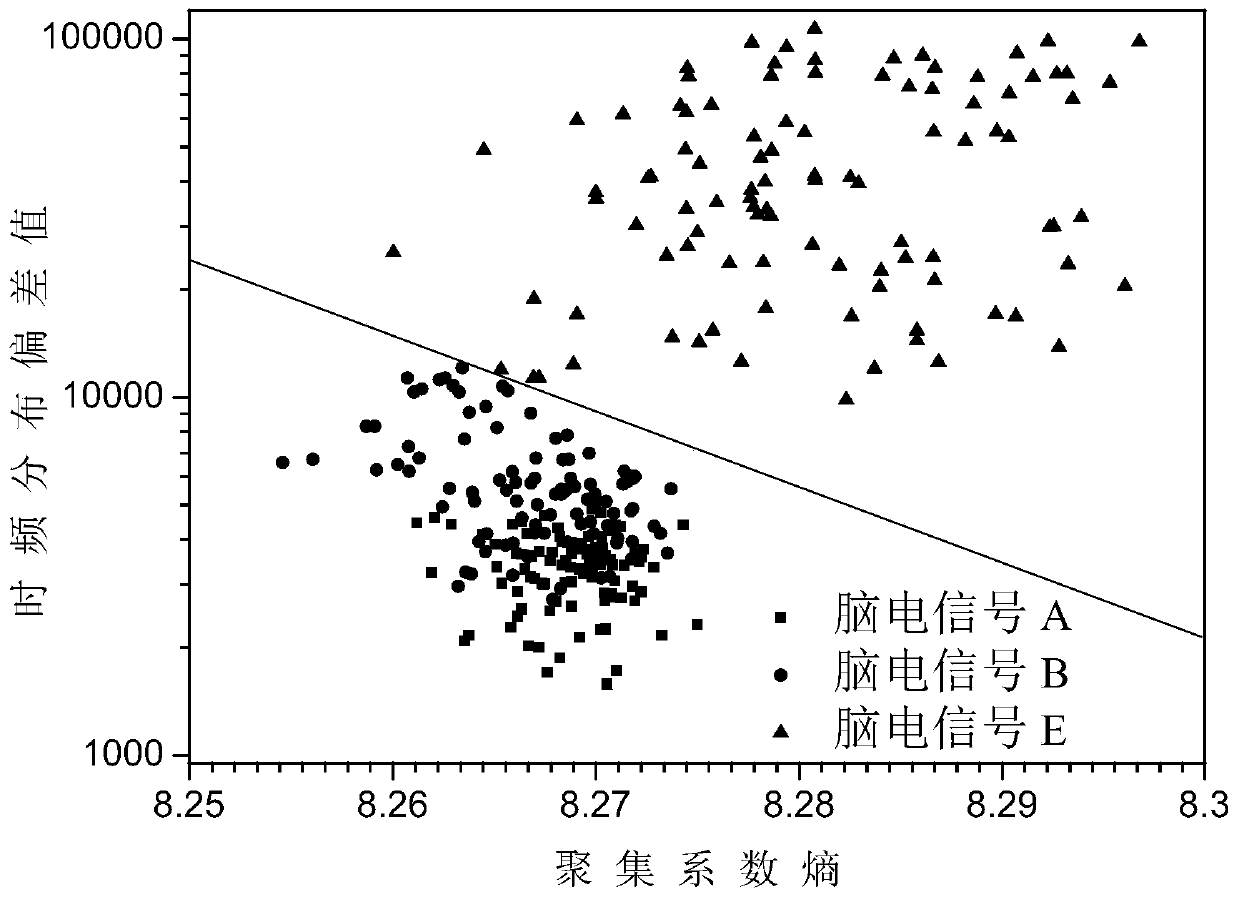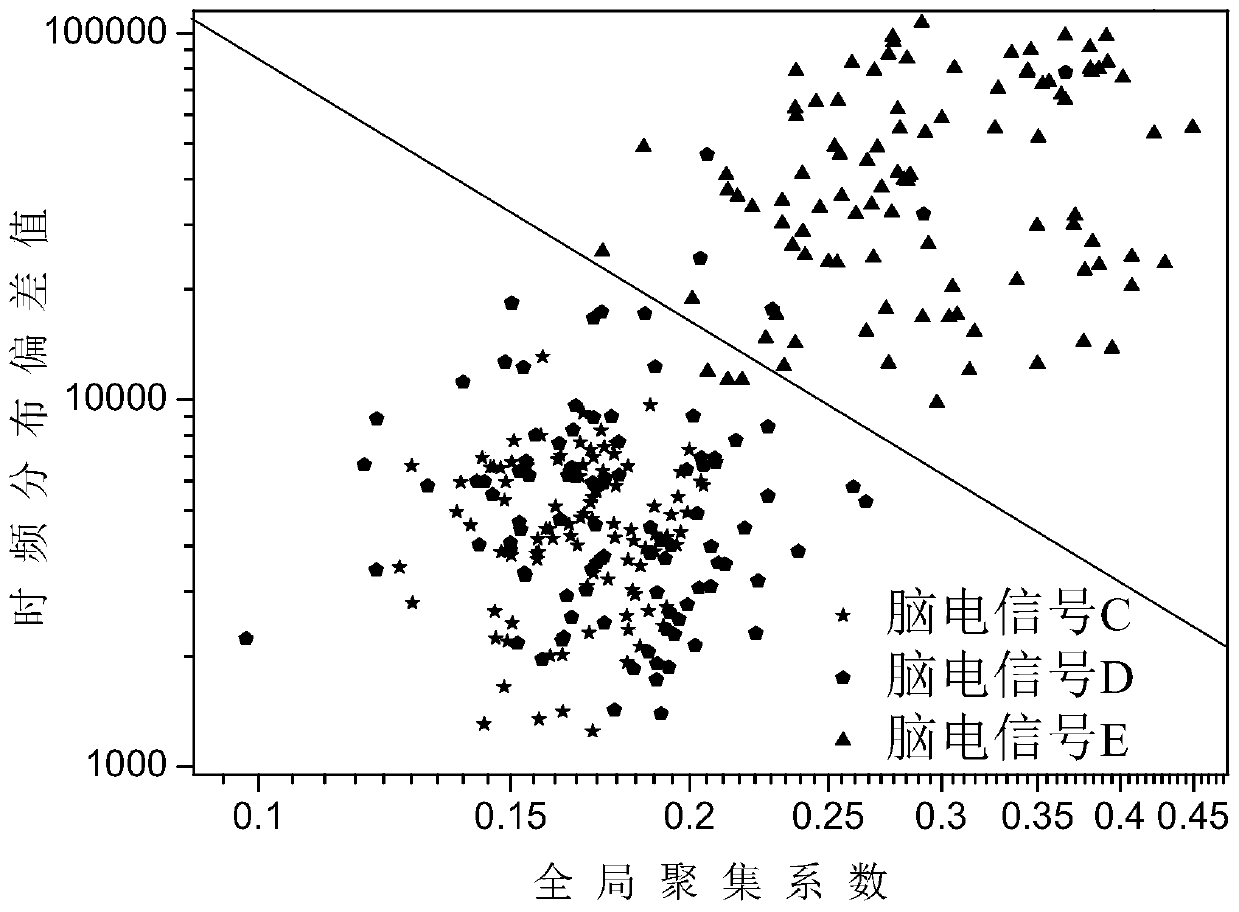Epilepsy EEG Signal Recognition Method Based on Optimal Kernel Time-Frequency Distribution Visualization
A time-frequency distribution, EEG signal technology, applied in diagnostic signal processing, medical science, diagnosis and other directions, can solve problems such as strong background noise, EEG signal analysis and processing difficulty, etc.
- Summary
- Abstract
- Description
- Claims
- Application Information
AI Technical Summary
Problems solved by technology
Method used
Image
Examples
specific example
[0102] Five types of EEG signals were collected from 10 people, among which, type A: the EEG data of five healthy people with their eyes open, type B: the EEG data of the same five healthy people with their eyes closed, type C: five The EEG signals of the non-epileptic focal area of a patient with epilepsy without seizures, category D: the EEG signals of the same five patients with epilepsy in the epileptic focus area without seizures, category E: EEG signals of the epileptic focus during seizures in the same five patients with epilepsy. The electrode placement method of each person was placed according to the 10-20 international standard, the sampling frequency was 173.61 Hz, and the sampling time was 23.6 seconds. After preprocessing the collected raw EEG data, the denoised EEG data can be obtained. The following two examples are used to verify the effectiveness of this method: (1) the distinction between A, B and E data, by distinguishing normal EEG signals from epilepti...
PUM
 Login to View More
Login to View More Abstract
Description
Claims
Application Information
 Login to View More
Login to View More - R&D
- Intellectual Property
- Life Sciences
- Materials
- Tech Scout
- Unparalleled Data Quality
- Higher Quality Content
- 60% Fewer Hallucinations
Browse by: Latest US Patents, China's latest patents, Technical Efficacy Thesaurus, Application Domain, Technology Topic, Popular Technical Reports.
© 2025 PatSnap. All rights reserved.Legal|Privacy policy|Modern Slavery Act Transparency Statement|Sitemap|About US| Contact US: help@patsnap.com



